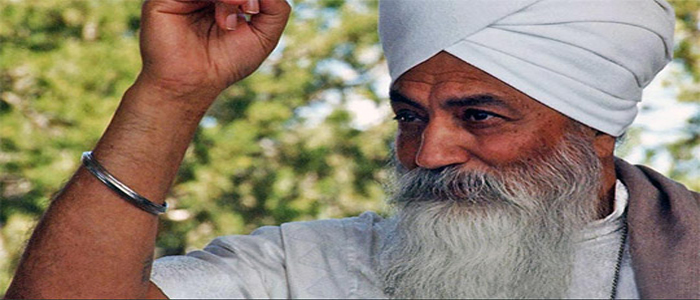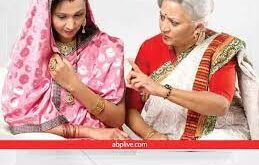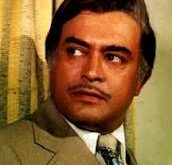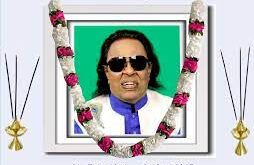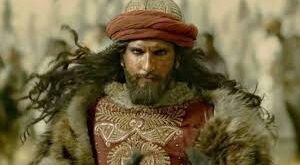The Teachings are the Teachings, and have
no one ‘s personality in them. I never edit
them; you should not edit them. It is a
Golden Chain. My own prayer is that you can
perfect what it is, and go with it. It is a
funny thing. It is a three-thousand-year-old
proven path-it’s not going to stop.
Why do you want to add something,
or subtract something-to satisfy your ego
or convince students? It is very deceitful on
the part of a Teacher to teach teachings to
please people. So honestly give people what
we have. Teach like me. Teach exactly as it
is. If y9u are not going to teach Kundalini
Yoga purely, then don’t teach at all.
With Kundalini Yoga you are dealing
with the life force of the atom.
Don’t play with the pranic energy.
· YOGI BHAJAN
COPYRIGHT YOGI B HAJAN 2003
The Concept of Kriya in Kundalini Yoga 100
Asana (Posture) in Kundalini Yoga 1 00
Teach the Teachings as Given 100
Reflections on Asana & Kriya 101
Angles & Triangles 102
Experiencing the Triangles
Warm-ups 102
Basic Sitting Postures I 03
Choosing a Surface • lotus Pose • Perfect Pose • Sitting in a Chair
Easy Pose • Rock Pose • Virasan • Rock Pose or Easy Pose?
Basic Mudras 105
Gyan Mudra • Shuni Mudra • Surya or Ravi Mudra • Buddhi Mudra
Prayer Pose • Bear Grip • Buddha Mudra • Venus lock
The Mastery of Simran 106
The Body Locks (Bandhas) 107
Yogi Bhajan on the Locks 107
Neck Lock Ualandhar Bandh) 107
Diaphragm Lock (Uddiyana Bandh) 108
Root Lock (Mulbandh) 109
The Great Lock (Mahabandh) 109
The Bandhas & the Three Gates 109
Working the Locks 1 10
Doei Shabd Kriya • Yogi Bhajan on Doei Shabd Kriya
Sat Kriya 1 1 2
The Concept of Kriya in Kunaalini Yoga
The word kriya means action . But kriya is not just any reflex
or action; it is an action that leads to a complete manifestation;
that lets a seed come to bloom, a thought come into actuality,
a desire become a commitment.
A kriya in yoga is a sequence of postures, breath, and sound
that are integrated together to allow the manifestation of a particular
state. When you do a kundalini kriya, the result of its
repetition is the access to, and mastery of a particular, predictable,
and stable state – a facet of your awareness.
In Kundalini Yoga, kriya shakti is the power of the soul to
manifest itself into each realm of experience: the real m of the
mind through proper thought; the realm of the body through
proper movement, shape, form ; and the realm of action through
the power of the will to manifest creativity to serve the Infinite.
You’ll find the word kriya used frequently-Kriya Yoga, Kundalini
kriyas, and kriya shakti. Kriya is also called tattva shakti, which
is the abil ity of the great soul of the U niversal Self to create new
categories and levels of m anifestation in m ind, body, and the
world.
When you learn to act with kriya, then action becomes
aligned with the larger pattern of the Self. We get into kriya by
the removal of the blocks, attachments, blindness, and ego that
hold us back from acting when we ought to act.
To act with kriya is a state of spontaneous flow. It’s free of all
the blocks. You apply great effort just when great effort should be
applied. You apply great relaxation just when great relaxation
should be applied. There is a perfect match between the inner
and outer, between the inner resources and the outer demands.
There is no gap of doubt, no hesitation, no partial support of the
action by only one a rea of your mind and not another. That sense
of wholeness and appropriateness to the action creates a grace in
your body, a central power in your thought, and a projective ability
in your m ind.
Mastering kriya brings with it a sense of grace, power, and the
ability to complete things. You act both timelessly and timely.
Kriya is not a random collection of actions. just as you put
together a transmission in a car, there’s a number of gears that
have to be in place, and they have to be there in a certain
sequence. Then the power that’s in the motor can be transferred
to the wheels, and you can go where you need to. j ust so, a kriya
in yoga is a sequence of postures, breath, and sound that are integrated
together to allow the manifestation of a particular state.
Asana (Posture) in Kundalini Yoga
Each asana or posture in a kriya is a n exercise, a meditation, a
connection to e nergy flow, and a self-diagnostic instrument for
the Kundalini Yoga practitioner.
As an exercise, the posture is used to isolate specific muscles,
to pressurize specific points or a reas that act as reflex
triggers to enhance the functions of the glan ds a nd organs,
and to re-direct. flush , or increase circulation.
As a meditation, the posture creates a special link and
foundation between the body and the mind. Each posture
stimulates an area of the body as the meditation technique
employed begins to release emotional masking and blocks.
The frequency of the m ind’s thoughts and the emotional tone
of the experience are intimately tied to the posture.
As a connection to energy flow, the posture opens an energy
pathway between meridian points. Even a baby in the womb
moves and goes through 84 postures. If the baby skips one of
those postures, that means that energy pathway isn’t as developed,
and they’ll have to compensate later. That is why some
postures are unexpectedly powerful and initiate great changes.
As a self-diagnostic tool, particular postures may give you
signals of pleasure or discom fort and pain that indicate conditions
of the m usculature, glands, or emotions.
Reflections on Asana Er Kriya
Science is good. but it grinds very slowly. There are problems with
scientific method because there is no trust in the human capacity
to be extraordinary. In yoga, we say: ” Become a real human
being. Realize your full potential.” The West and scientific statistics
look at you in relation to the average. The West compares you
to someone else; but yoga compares you to your own potential.
It’s a completely different relationship.
What about posture?
Everyone understands that a posture may build a specific muscle
group. We begin to expand that. There may be reflexes-this hand
may be connected to something else in the body. There may be
interconnections throughout the body, connecting its most distant
parts in unexpected ways.
Take a posture as a yogi
You’ll go through stages as you adjust to the effects of the posture.
At first, you may feel awkward . You may fall back on your
Western habit of extroversion and look at everyone else instead of
yourself. When you first take a posture, you take it very consciously.
It’s new. The first thing you do is take the unconscious,
ful l of habits and patterns, and you put it into a specific, consciously
established, fixed or rhythmic posture or asana.
Awkwardness comes because you encounter the rigidity of your
own ego and habits-consciously.
If you hold it, it starts to feel better. The asana starts to find
a natural place in you. Your body adjusts, the shoulders relax, you
relax the muscles you didn’t need to use. You find a muscle that
you didn’t know you had. You place your mind in the right way.
Suddenly there’s a relationship establ ished between you and you.
Suddenly, that which is conscious starts to feel natural, starts to
give form, shape, flows of energy, and patterning, to that which
is unknown in you. There starts to be a bridge, a communication
between the conscious and the unconscious, between your rightnow
intentional patterning and all the patterning you don’t even
know you had. You start to give all of that energy a new form.
So, first there is awkwardness, then the posture begins to be
natural, and then you start creating form. If you hold the form
long enough, the unconscious picks it up and says, ” Oh, I can do
that, ” and starts doing it. The unconscious does what it usually
does: it starts replicating and repeating it, even without thinking
about it. First you create the form, then you start transforming transforming transforming all
the things you’re not even aware of.
COPYRIGHT YOGI BHAJAN 2003
Entering what is called kriya
When that process connects the conscious and the unconscious,
it forms a bridge of energy that re-aligns you between the body
and the mind. Then you enter into kriya. Kriya is the spontaneous
fulfillment of action through the engagement of asana that links
the I nfinite Self of you to this finite moment. It has to tear apart
the old attachments, and reform you in the transformed relationship
between this body and the world body, between this
moment of your mind and your total mental potential. That is
posture in the form of kriya, expressing the joy of your soul! It is
different than the mechanical perspective we take in most
Western thinking. It’s a creative project, not a static body. Every
posture is a dynamic, formative creation.
If you do this with your physical body, you are also establishing
a posture of emotion and attitude. You are taking a stand. We say
that in English. If you ask someone their attitude, don’t they answer
both verbally and show you a posture? Which do you believe? The
words they say or the posture they take? You believe the posture
more than the words. The body doesn’t lie. The body records that
shaping and displays the practiced truth of your own habits.
We go through another change when we take a posture. A
posture makes you conscious of a body a rea. As you hold it, you
become self-conscious. Then you become conscious of yourself.
and if you really put yourself into it, you become a conscious self.
And if you reach this awareness across many postures, you
become a conscious consciousness.
The ultimate posture
These are the stages of refinement in relationship established by
posture between you and your I nfinite Self. With asana that leads
to kriya, which is a spontaneous flow of life energy, you start by
posturing with your ego. Then asana gives you a posture. Then
pratyahar comes, when your mind substitutes a positive thought
for a negative thought, and re-aligns you toward your goal. The
mind commits. Once you have a committed position, then you
start to have a projection . Projection is called Akaal Moorat.
which literally means “timeless picture.” You start to look like
Infinity. You start becoming a picture of you beyond you. The final
stage would be perfection, Saibhung-self-illumined, when you are
a resource unto yourself, communicating with your own Infinityneeding
noth ing. The ultimate posture is one of prosperity. The
ultimate posture is not of you fulfilling your own requests. The
ultimate posture is one asking for that which is yours.
That’s what yoga posture is all about. It’s very practica l.
There’s no such thing as an abstract concept without a posture,
kriya, or sadhana to give you the capacity to experience it.
Angles Er Triangles
Kundalini yoga is a science of angles and triangles. Every angle created with
the body has a corresponding energetic effect. For instance, lifting the legs 30
degrees affects the navel point. Lifting the arms 60 degrees affects the heart and
lungs. From the yogic view. the body is a whole, energetic, vibrating, creative entity-
seven chakras, three gunas, five tattuas, ten bodies-a huge complex of energies
on many different levels. Certain actions encourage that energy flow, and
gives you the strength you need to experience yourself and enjoy this world.
In Kundalini Yoga, we are aware of the balance of the geometry of the body
and how it affects the flow of energy, motion, and emotion . There are 1 8 major
muscle groups that get involved. You can sense the body’s balance by exploring
the many triangles between key points. For example. a triangle is formed between
the Navel Point and the hips. If that’s off even the slightest amount. it will create
energy problems. You may find yourself unable to express yourself with enough
energy.
By practicing a wide variety of Kundalini Yoga kriyas, you will balance the
angles and triangles throughout the body and give a new vitality to your entire
structure.
Warm-up Exercises
Yogi Bhajan never taught warm-up exercises himself
when leading Kundalini Yoga kriyas, but
acknowledges that in some instances warm-ups
can be useful. Here are the options to choose from
if you determine it is necessary to include a warmup
before teaching a Kundalini Yoga kriya:
You may choose any short Kundalini Yoga
kriya. Some examples of good Kundalini Yoga
kriyas for warm-up purposes are listed at the end
of the Sets chapter.
Pranayam sequences are especially good for
waking up the body and opening the lungs.
Do a few repetitions of the short version of
Sun Salutations (Surya Namaskar) included in
this Manual. (Yogi B hajan taught this in the seventies,
so we include it in the Kundalini Yoga
archives! )
You may also lead Life Nerve Stretches, Spinal
Flex and Cat-Cow, all of which can stand alone,
and which can be used as a warm-up series.
You can also recommend that students do
their own stretching exercises before coming to
class, or before the class begins.
If leading warm-ups, always identify when
you begin the kriya. In this way, the students are
clear about the sequence of the kriya, and understand
that we maintain the integrity of sets as
they were taught by Yogi Bhajan .
COPYRIGHT
Basic Sitting Postures
When an exercise in a kundalini kriya requires sitting in a
meditative or cross-legged posture. any of the sitting positions
listed here will be appropriate, if not specifically
given by Yogi Bhajan. The main requirement is for the
spine to be straight and the posture to be balanced, with
Neck Lock applied. When sitting for meditation, it is
important to feel balanced and stable. If one is leaning to
one side or has great pain in the knees or ankles, one cannot
meditate. If you do get into meditation in an off-balance
posture, you run the risk of misdirecting the energy
and blood circulation that the kriya has stimulated.
Remember that all parts of the body are interconnected
and affect each other. You r posture should always feel
well-balanced and comfortable to you. It should reflect
harmony.
Choosing a Surface to Sit on
Choose the surface for meditation with consideration for
the care of the spine and electromagentic integration of the
nervous system. The surface must be neither too cold, nor
too hard. That is why most yoga practitioners sit on a
sheepskin or mat. A thick pad or large pillow will not work
well enough because neither offer enough support to stabilize
the spine. A sheepskin is just the right thickness. It
provides an electromagnetic insulation from the ground, to
prevent feeling tired or drained of energy when meditating.
The next best materials to sit on are wool, cotton, and silk.
The worst surface to sit on is concrete or stone.
In any of these sitting postures, some people may be
too stiff in the lower back or have pain in the knees.
legs, or ankles. Sitting on a stiff cushion that lifts the
buttocks about 6 to 8 inches can help the back and
take pressure off the knees.
Lotus Pose
(Pattmasana)
BASIC SIITING POSTURES
Bend the left leg so the left heel comes to the groin. Lift the left foot onto
the upper right thigh. Bend the right leg so that the right foot goes over
the left thigh, as close to the abdomen as possible. (This posture may also be
done reversing the legs.) Straighten the spine. Lift the chest and press the lower
spine slightly forward . I n this position you will feel locked in place. Once
you are in it you can meditate very deeply and the position will maintain
itself. There are very few exercises or meditations which require this posture,
but it is recognized as one of the best asanas for deep meditation.
Per(ect Pose (Siddhasana)
This posture is excellent for stimulating the nervous system and utilizing
the body’s sexual energy. It requires practice to perfect. but once it is mastered,
simply sitting in this posture puts you into meditation. Bring the left
heel under the sex organ. The left heel should touch the spot on the pelvis
between the sex organ and the rectum. Bend the right leg and put the toes
of the right foot behind the left knee. The toes of the right foot are contained
in the bend of the left knee. Only the big toe is exposed. Pull the
Sitting in a Chair
If none of the basic sitting poses are comfortable, you may sit in a straightbacked
chair that gives you firm support. It is essential that the feet be equally
placed on the ground ensuring that the lower spine and hips do not get out
of balance. and that the blood distribution in the pelvic area will be balanced
with respect to the two sides of the body.
Easy Pose (Sukhasana)
The followin g three variations of Easy Pose require less flexibility a n d are easier on the knees than the Lotus Pose. The drawback is
that you must be more conscious of keeping the lower spin e slightly forward so the upper spin e can stay straight.
Variation One Variation Two Variation Three
Half Lotus (Araha Paamasana)
Put the left foot into the groin so that the
sole of the foot is against the uppermost
part of the thigh. Place the right foot over
the left ankle, so that it rests on the right
thigh, sole of the foot turned up as pictured.
Assume Sukhasana and lift the heel of the
foot near the groin. Arrange the foot on top
so it rests directly on the calf, with the ankle
of the top foot about two inches up from
the ankle of the bottom foot. In this pose,
make sure to press the lower spine forward.
It will have a tendency to slip backward.
If the first two postures are too strenuous,
try this variation. Put one foot under the
opposite knee and then draw the extended
foot under the other knee. Pull the spine
up straight and press the lower spine
slightly forward.
 Rock Pose (V’firasana)
Rock Pose (V’firasana)
This asana is well known for its beneficial
effects on the digestive system.
It gained its nickname from the idea
that one who masters it can ” digest
rocks.” It also makes you solid and
balanced as a rock. Start by kneeling
on both knees with the top of the
feet on the ground. Sit with the heels
under the sitting bones. The heels
will press the two nerves that run into the lower center of each
buttock. Keep the spine pulled straight.
Virasan (Hero or warrior Pose)
Sit on the left heel, with the right knee
up near the chest. Hands are in Prayer
Pose. The heel is ideally on the perineum,
near the anus. Instead of collapsing
the foot, one may put padding
under and over the left foot. to comfortably
maintain the right position . If
you sit with the flat part of the foot
turned out and the spine crooked, you
tip to one side. Sittin g on the heel straightens the spine.
Basic Mudras (Seals)
A mudra is a position of the hands that locks or seals and guides
energy flow and reflexes to the brain. The hands are an energy
map of our consciousness and health. The yogis mapped out the
hand a reas and their associated reflexes. Each area of the hand
connects to a certain part of the body or brain, representing different
emotions and behaviors. The hands become a keyboard for
input to our mind-body energy system . Each finger relates to a
planetary energy and the quality that each planet represents. The
thumb relates to the persona of the individual.
Touching the thumbtip (fleshy part, not the nail) to each of
the fingertips creates specific results. This is the most commonly
practiced way to seal a mudra unless otherwise indicated. Exert
enough pressure to feel the flow of energy, but not enough to
whiten the fingertips.
Shuni Mudra (Seal of Patience)
To form Shuni Mudra place the tip of the m iddle finger on the tip
of the thumb. This mudra is said to give patience. discernment,
and commitment. The middle finger is associated with the planet
Saturn, which represents the task master, the law of karma, the
taking of responsibility and the courage to hold to duty.
Gyan Mudra (Seal of Knowledge)
To form Gyan Mudra. put the tip of the thumb together with the
tip of the index finger. This stimulates knowledge, wisdom, and
the power to compute. The energy of the index finger is associated
with Jupiter, representing expansion. This mudra is the one
most commonly used. It gives receptivity and calmness.
Surya or Ravi Mudra (Seal of the sun, seal of Life)
This mudra is formed by placing the tip of the ring finger on the tip
of the thumb. Practicing it gives revitalizing energy, nervous system
strength, good health. and the power to win. The quality of the ring
finger is associated with the Sun or Uranus. The Sun represents
energy, health, and sexuality. Uranus stands for nervous system
strength, intuition and change.
Gyan Mudra (“active}
Locking thumb over index finger
In the practice of powerful pranayams or exercises the
” active ” form of the mudra is often used. In the active form
you bend the index finger under the thumb so the fingernail
presses against the back of the thumb.
 पौराणिक कथाओं, प्रेरक क्षण, मंदिरों, धर्मों, फिल्मों, हस्तियों के बारे में दिलचस्प जानकारी, हजारों गाने, भजन, आरती के बोल हैं Your wish may come true today…
पौराणिक कथाओं, प्रेरक क्षण, मंदिरों, धर्मों, फिल्मों, हस्तियों के बारे में दिलचस्प जानकारी, हजारों गाने, भजन, आरती के बोल हैं Your wish may come true today…
